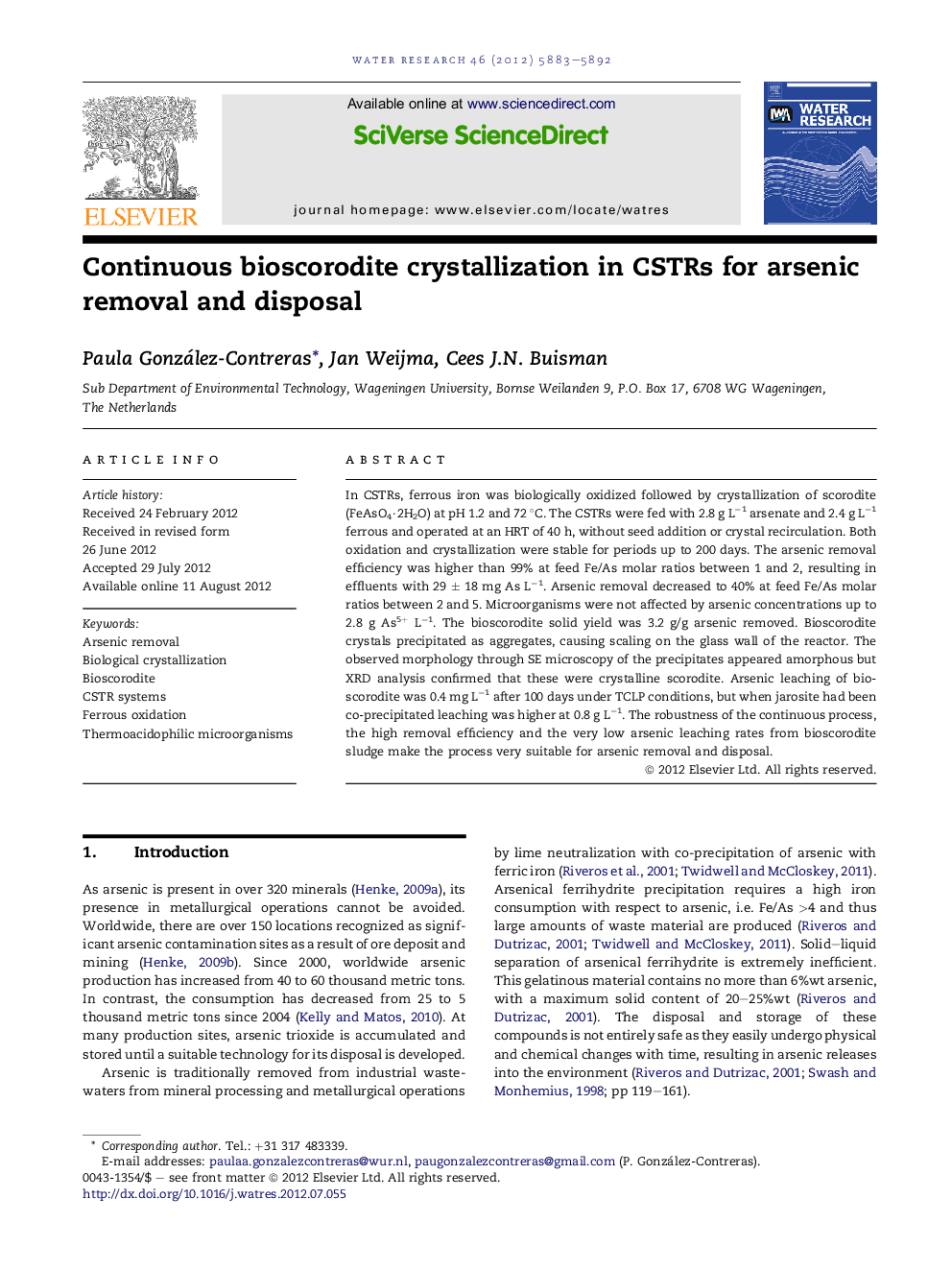| Article ID | Journal | Published Year | Pages | File Type |
|---|---|---|---|---|
| 4482033 | Water Research | 2012 | 10 Pages |
In CSTRs, ferrous iron was biologically oxidized followed by crystallization of scorodite (FeAsO4·2H2O) at pH 1.2 and 72 °C. The CSTRs were fed with 2.8 g L−1 arsenate and 2.4 g L−1 ferrous and operated at an HRT of 40 h, without seed addition or crystal recirculation. Both oxidation and crystallization were stable for periods up to 200 days. The arsenic removal efficiency was higher than 99% at feed Fe/As molar ratios between 1 and 2, resulting in effluents with 29 ± 18 mg As L−1. Arsenic removal decreased to 40% at feed Fe/As molar ratios between 2 and 5. Microorganisms were not affected by arsenic concentrations up to 2.8 g As5+ L−1. The bioscorodite solid yield was 3.2 g/g arsenic removed. Bioscorodite crystals precipitated as aggregates, causing scaling on the glass wall of the reactor. The observed morphology through SE microscopy of the precipitates appeared amorphous but XRD analysis confirmed that these were crystalline scorodite. Arsenic leaching of bioscorodite was 0.4 mg L−1 after 100 days under TCLP conditions, but when jarosite had been co-precipitated leaching was higher at 0.8 g L−1. The robustness of the continuous process, the high removal efficiency and the very low arsenic leaching rates from bioscorodite sludge make the process very suitable for arsenic removal and disposal.
► We crystallize bioscorodite in CSTRs at pH 1.2 and 72 °C. ► An arsenic removal efficiency of 99% was achieved in CSTRs. ► Bioscorodite crystallization is a robust continuous process. ► Low arsenic leaching rates from bioscorodite make it suitable for solid disposal.
